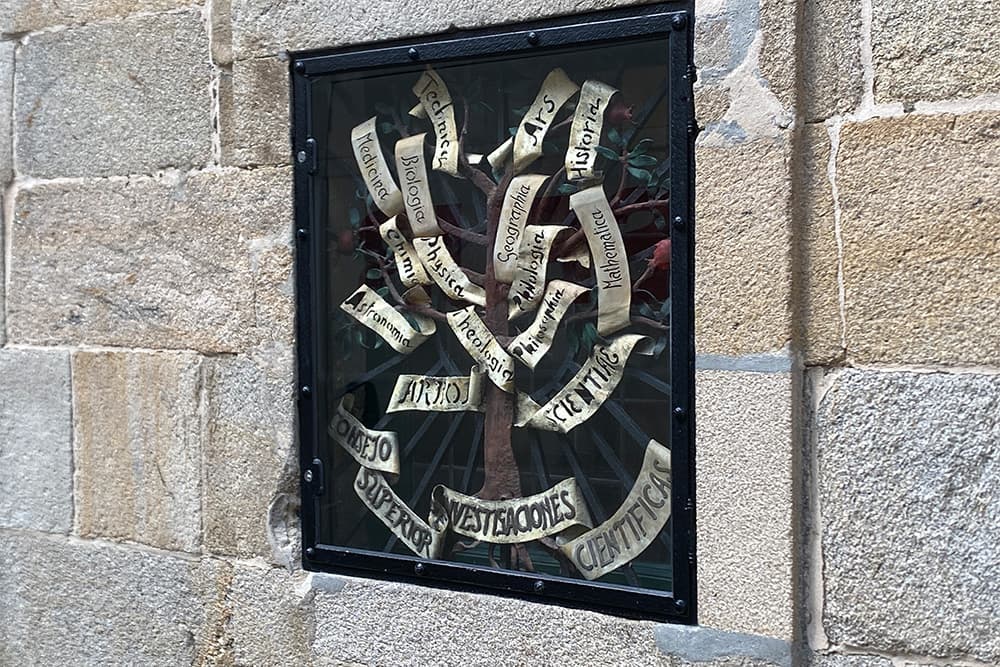The Tree of Science is a statue that over the years has captured the attention of locals and tourists alike. Located between the colleges of Fonseca and San Xerome, it is home to a curious tradition that has endured over the centuries.
This sculpture has its roots in the work of Ramon Llull.The Tree of Science’, an encyclopedic text written at the end of the 13th century in which the author compares the different fields of knowledge with the branches of a tree, creating a beautiful visual metaphor that illustrates how everything starts from the same base.
The Tree of Science of Compostela is a material representation of this concept, with small scrolls intertwined among its branches. This image has been adopted by the Centro Superior de Investigaciones Científicas as its symbol since its foundation, back in 1939, and has become an emblem that reflects the diversity and breadth of scientific knowledge.
It is surrounded by a mysterious tradition that consists of to turn around three times in front of the sculpture and point backwards to one of its branches. Your selection will indicate the discipline to which you should dedicate your life.. Its origin is unknown, but it was traditionally a formula used by undecided students who did not know what career to choose. Over time, it has evolved to confirm the vocations of the participants in the tradition.
The Tree of Science, once uncovered, is now protected by glass. This hinders the custom of touching the concrete branch with the hand, but its essence continues as a testimony of Santiago de Compostela’s connection with the academic tradition.
The building that houses the sculpture has an equally fascinating history. It was built in the early 18th century and was originally intended for the library of the Colegio de Santiago Alfeo, later known as the
Pazo de Fonseca
. Although it is often said that the tree is on the façade of Fonseca, it is actually located in a building built later, flanked by the Colegio de San Xerome.
The Pazo de Fonseca has been listed as an Asset of Cultural Interest (BIC) and has had different roles over the years, from library to headquarters of the Seminario de Estudos Galegos. Today, it is the headquarters of the CSIC Delegation in Galicia.
The Tree of Science of Santiago is not only an emblematic sculpture that adorns the city, it is also a symbol rooted in the history and university tradition of Compostela. So, if you want to try your luck and see what vocation is in store for you, don’t hesitate to visit him and do the ritual.






0 Comments